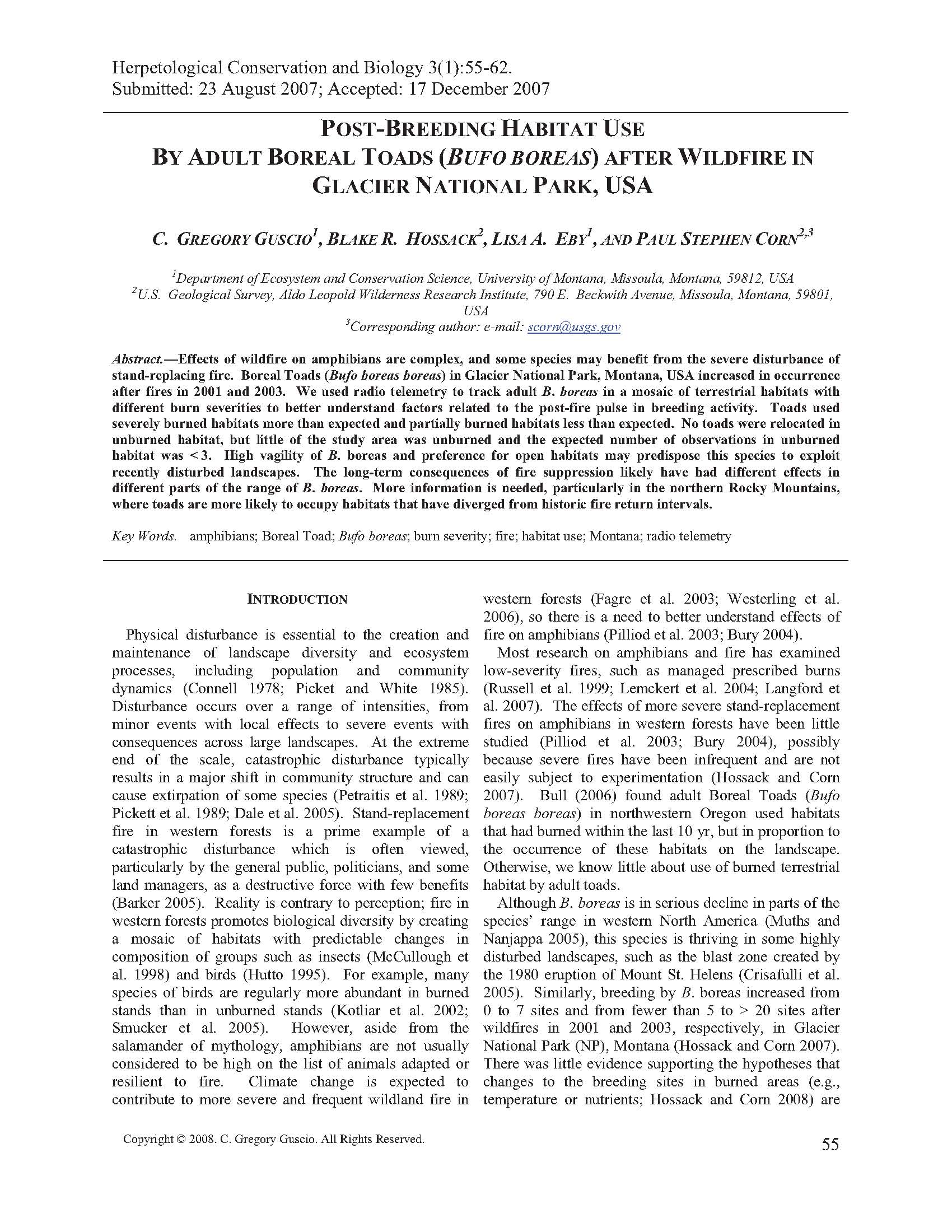Post-breeding habitat use by adult boreal toads (Bufo boreas boreas) after wildfire in Glacier National Park, USA
http://www.fs.fed.us/rm/pubs_other/rmrs_2008_guscio_g001.pdf
Abstract/Summary
Effects of wildfire on amphibians are complex, and some species may benefit from the severe disturbance of stand-replacing fire. Boreal Toads (Bufo boreas boreas) in Glacier National Park, Montana, USA increased in occurrence after fires in 2001 and 2003. We used radio telemetry to track adult B. boreas in a mosaic of terrestrial habitats with different burn severities to better understand factors related to the post-fire pulse in breeding activity. Toads used severely burned habitats more than expected and partially burned habitats less than expected. No toads were relocated in unburned habitat, but little of the study area was unburned and the expected number of observations in unburned habitat was < 3. High vagility of B. boreas and preference for open habitats may predispose this species to exploit recently disturbed landscapes. The long-term consequences of fire suppression likely have had different effects in different parts of the range of B. boreas. More information is needed, particularly in the northern Rocky Mountains, where toads are more likely to occupy habitats that have diverged from historic fire return intervals.
Publication details
| Published Date: | 2008 |
| Outlet/Publisher: | Herpetological Conservation and Biology 3: 55–62 |
| Media Format: |
ARMI Organizational Units:
Rocky Mountains, Northern - BiologyTopics:
DroughtFire
Species and their Ecology
Stressors
Place Names:
MontanaKeywords:
amphibiansARMI
behavior
climate
ecology
fire
habitat
stressors

